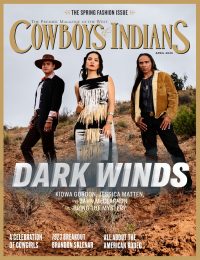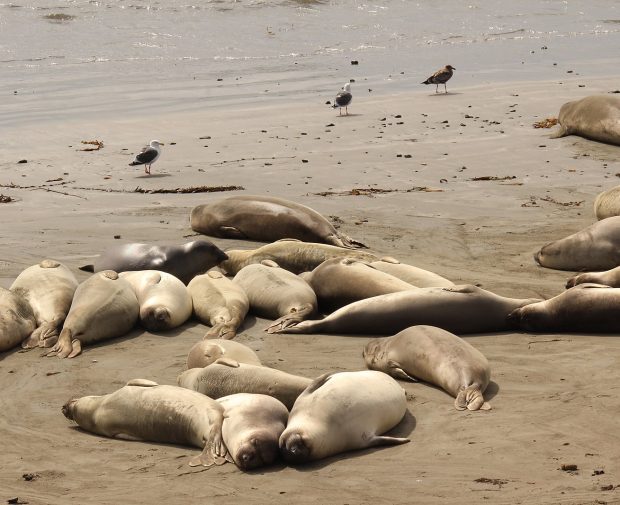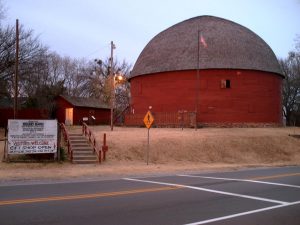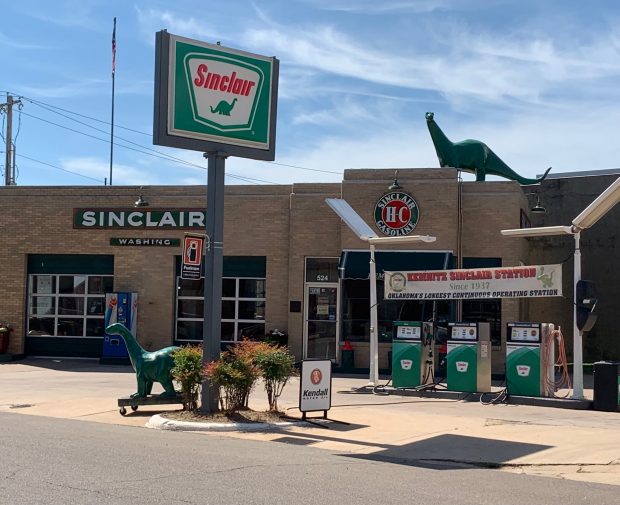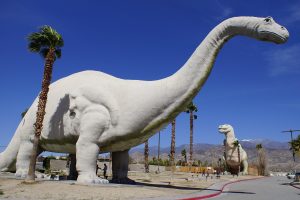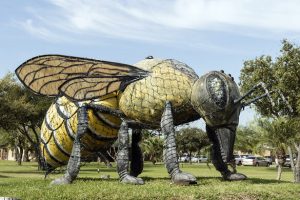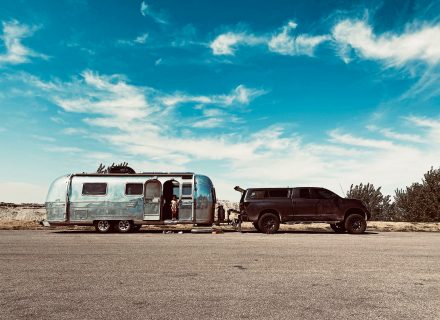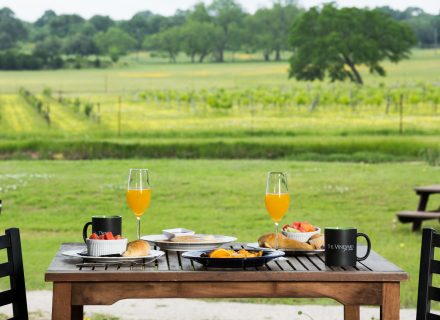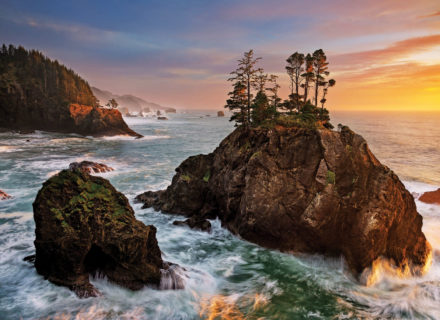Wherever you’re headed in the West, there’s bound to be an attraction worth pulling off for along the way.
You’ve seen the selfies — maybe even pulled over yourself to snap some. Seriously, who isn’t going to take a little detour (or devote a special trip) to Paris, Texas, to marvel at the Lone Star incarnation of the Eiffel Tower with a red cowboy hat on top?
We love a good roadside attraction not just for the chance to stretch our legs but for the cultural enhancement of an atypical landmark. And, naturally, the photo op.
The West boasts plenty of roadside attractions. We’re throwing out just a few for your consideration for your next road trip. And we’d really like to hear from you about some of your favorites, so please drop us a line.
Cadillac Ranch, Texas
If you find yourself on the highway west of Amarillo, keep an eye out for Cadillac Ranch, a bizarrely wonderful place to snap a selfie. Located on the south access road of I-40 just east of the Arnot Road exit, the artsy Caddy graveyard was created in 1974 by Chip Lord, Hudson Marquez, and Doug Michels — members of the San Francisco art group Ant Farm. The popular site consists of 10 wildly painted, graffiti-covered Cadillacs buried in the ground tailfins-up — it’s said they’re pitched at the angle of the Great Pyramid of Giza. You can see it from the highway, but it’s worth getting closer, with or without a can of spray paint.
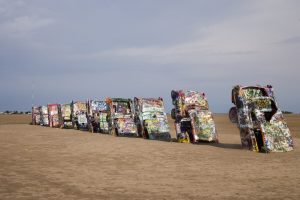
Stonehenge On The Columbia River, Washington
Off Highway 14 in rural Washington, there is, unbelievably, a full-size replica of Stonehenge. It might look like a full-on mirage of the original prehistoric monument on Salisbury Plain in Wiltshire, England, but this concrete monument sits on a bluff overlooking the Columbia River Gorge. Built by railroad executive and big promoter of paved modern roads Sam Hill, it was completed in 1929 and was the first U.S. monument to memorialize those who gave their lives in World War I. A plaque at the site reads To the memory of the soldiers and sailors of Klickitat County who gave their lives in defense of their country. This monument is erected in hope that others inspired by the example of their valor and their heroism may share in that love of liberty and burn with that fire of patriotism which death alone can quench. On the site you’ll also find the Klickitat County Veterans Memorial; erected in 1995 it honors those who have died in service to their country since WWI. Hill also founded the Maryhill Museum of Art, which is just a few miles away and billed as the most remote art museum in the country. Between the scenery, the monument, the memorial, and the eclectic collection at the museum, there’s plenty to take in and marvel at.
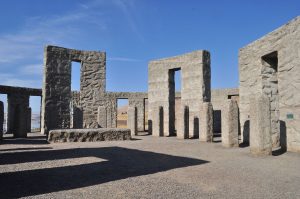
Piedras Blancas Elephant Seal Rookery, California
One of the most reliably mesmerizing roadside wildlife attraction on the Pacific Coast — or probably any other coast furnished with a scenic Highway 1 — the Piedras Blancas Elephant Seal Rookery is just 7-ish miles north of far more obvious roadside colossus, Hearst Castle, at the gates of Big Sur. Leave it to a beach sporting up to 17,000 rowdy, horny, crazy-huge. and crazy-looking elephant seals to remind us that nature easily dwarfs even the most desperately mighty human palace. Best viewing window is fall through spring, with marquee slugfests scheduled December/January, featuring 2½-ton, 16-foot-long bulls fighting for harem rights. Birthing of 60-pound pups happens from December into March.
Arcadia Round Barn, Oklahoma
The Arcadia Round Barn in Arcadia, Oklahoma, is a towering, perfectly round architectural wonder of days past, and it remains one of the most curious sites along Oklahoma’s stretch of Route 66. Built in 1898 by farmer and businessman William Odor, the barn was considered an architectural feat at the time it went up, despite all the critics who claimed the round, weird style of the barn would never stand. Using native burr oaks, Odor soaked green oak boards in river water to make them pliable so they could be bent to perfectly rounded shapes. When it was new, the barn quickly became a social gathering for the small community of Arcadia.
The Kemnitz Sinclair Service Station, Oklahoma
In Perry, Oklahoma, at the southeast corner of the downtown square, you’ll find the Kemnitz Sinclair Service Station. Built in 1937 by Mid-Continent Petroleum Co. as a Diamond D-X Service Station, the station has never been closed in its existence and has been operated by the Kemnitz family since 1955. In June 2007 the Kemnitz Sinclair Station was recognized by the Sinclair Oil Corporation and the Oklahoma Petroleum Marketing Association as the “Longest Continuous Operating Service Station in Oklahoma.” It’s one of the last few gas stations that still offer full service, which means you can stay in your car while having your windows washed, tires and oil checked, and gas pumped by an attendant. Not only that, but the station features a giant green dinosaur. Sinclair’s advertising and marketing adopted the dinosaur back in the 1930s to promote lubricants from crude oil thought to have formed from dinosaurs. Today fiberglass Dino welcomes selfies.
Cabazon Dinosaurs, California
If you and your young ones can’t get enough of giant dinosaurs, you really need to get prehistoric with Dinny the Dinosaur and Mr. Rex in Cabazon, California, outside of Palm Springs. Touted as the biggest man-made dinosaurs in the world, the Brontosaurus and Tyrannosaurus rex measure 150 feet long and 65 feet long respectively and stand tall enough to be seen from Interstate 10. The Cabazon Dinosaurs famously had screen time in 1985’s Pee-wee’s Big Adventure, but they’ve have been attracting attention since long before. We have sculptor and theme park artist Claude Bell to thank for them; he came up with the idea to build the giant steel-and-concrete structures in 1964 as a way to get more people to stop at his nearby restaurant (hence the original name of Claude Bell’s Dinosaurs). Now an iconic destination unto themselves, the dinosaurs occupy the site with a creationist museum and gift shop (housed inside Dinny). They get seasonal and holiday-themed paint jobs, and on weekends, you can line up at the Wafflesaurus Truck, which serves dinosaur-themed ice cream items.
World’s Largest Killer Bee, Texas
Hidalgo, a smallish town on the Texas-Mexico border in the Rio Grande Valley, boasts what’s billed as the World's Largest Killer Bee. That they embrace being the place where killer bees entered the U.S. might be a little confounding, but this particular killer bee is definitely something to see if you’re heading that way anyway. And you just might have Hidalgo on your itinerary the first full weekend in March for Borderfest, which has been celebrating border community and global culture since the gathering’s inception in 1976.
Photography: (Cover image) Courtesy Joe Mabel/Wikimedia Commons; (Cadillac Ranch) Courtesy Carol M. Highsmith/Wikimedia Commons; (Stonehenge) Courtesy Joe Mabel/Wikimedia Commons; (Elephant Seal Rookery) Courtesy Marelbu/Wikimedia Commons; (Arcadia Round Barn) Courtesy Wikimedia Commons; (Sinclair Service Station) Courtesy Craig Kemnitz; (Cabazon Dinosaurs) Courtesy Chris English/Wikimedia Commons; (Killer Bee) Courtesy Carol Highsmith/Library of Congress



